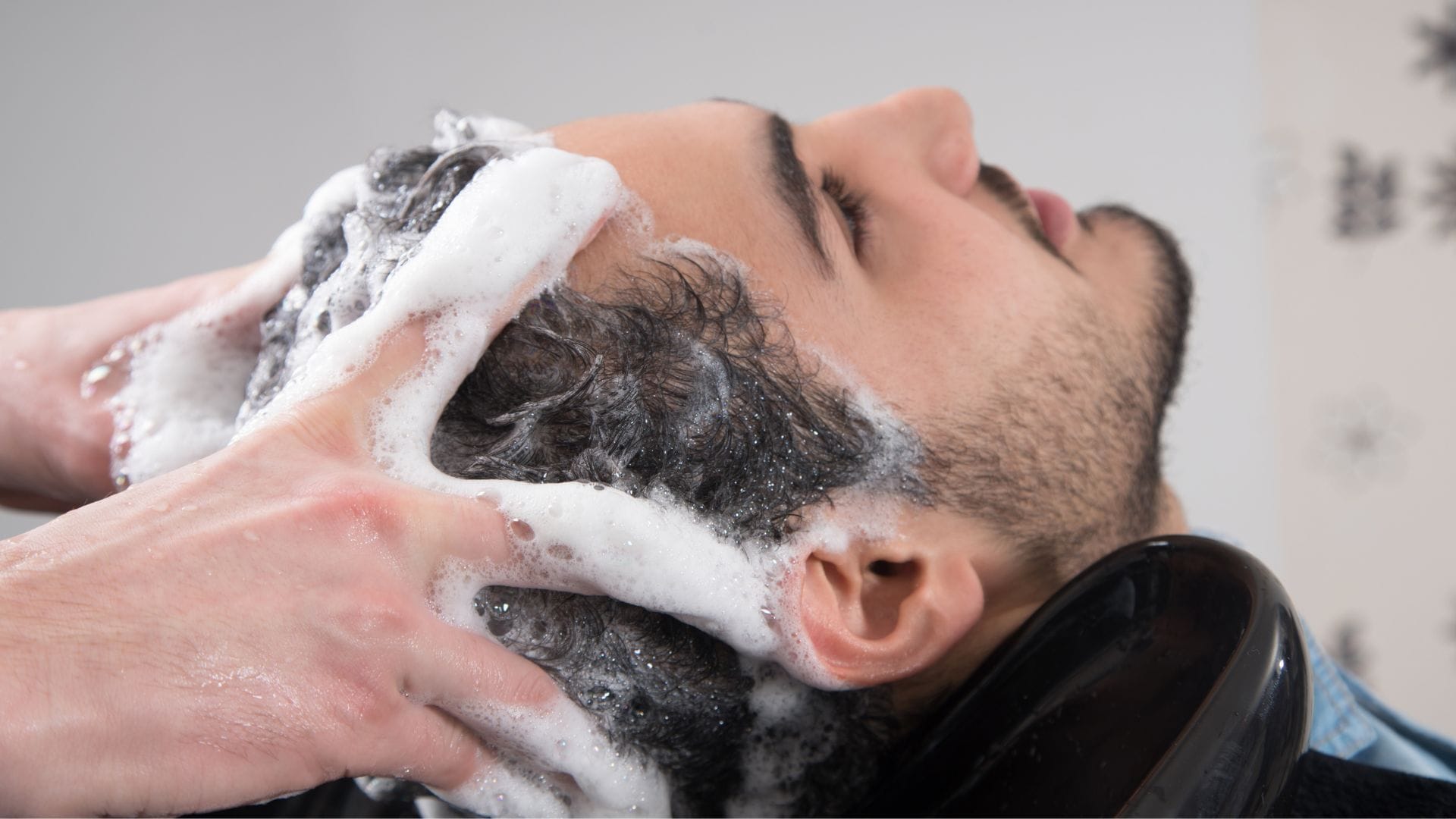Achieving a perfect hair wash is crucial for maintaining healthy and stylish hair. Many rely on a professional barber in New York for that impeccable finish, known for their exceptional attention to detail and use of top-quality products. However, with these simple tips, anyone can enjoy salon-quality results at home. By incorporating the right techniques and products into your routine, you can enhance your hair’s natural shine and texture, ensuring it looks its best every day.
Step 1: Choose the Right Shampoo
The first and most critical step in achieving a perfect hair wash is selecting the right shampoo that suits your specific hair type, whether it be oily, dry, or normal. A shampoo tailored to your hair needs can make a significant difference in maintaining healthy and vibrant hair. If your hair tends to get greasy quickly, opt for a shampoo designed for oily hair that will help control excess sebum production without stripping your hair of its natural oils.
For those with dry or damaged hair, a moisturizing or repairing shampoo with ingredients like argan oil or shea butter will nourish and hydrate the strands, preventing breakage and frizz. For normal hair, a gentle cleansing shampoo that maintains balance without being too harsh or too creamy is ideal. Avoid common hair care mistakes by taking the time to understand your hair’s unique requirements. This ensures that every wash contributes positively to your hair’s health and appearance, paving the way for a fresh and polished look.
Step 2: Use Lukewarm Water
It’s essential to use lukewarm water while washing your hair to maintain its health and luster. Hot water, though tempting to use for its comforting warmth, can strip away the natural oils that protect and nourish your hair. These oils, known as sebum, play a crucial role in keeping hair hydrated and shiny. Without them, your hair can become dry, brittle, and susceptible to breakage. For men’s hair, particularly, which can be thicker and coarser, avoiding overly hot temperatures is vital to prevent further damage or dryness. Lukewarm water, on the other hand, effectively cleanses the scalp and hair without causing undue stress to the cuticles. It allows your hair to retain its essential moisture, thus safeguarding its natural texture and strength. By making a simple switch to lukewarm water, you protect your hair, keeping it vibrant and well-nurtured, and ensuring that every wash contributes positively to your hair care routine.
Step 3: Rinse Thoroughly
Before applying any shampoo, it’s crucial to thoroughly rinse your hair with water. This initial rinse helps to remove surface dirt, excess oil, and any product buildup from styling products such as gels, sprays, or creams. By doing so, you ensure that your shampoo can penetrate more effectively into your hair and scalp, allowing it to cleanse more deeply rather than getting trapped by pre-existing buildup. Proper rinsing sets the foundation for an optimal wash, as it helps to open up the hair cuticles slightly, preparing them for the nutrients and cleansing agents found in your shampoo.
This step is particularly important if you regularly use multiple hair products, which can lead to persistent residue if not properly rinsed out. Additionally, a thorough rinse refreshes the scalp and promotes better circulation, contributing to overall scalp and hair health. Taking a moment for this preliminary rinse ultimately enhances the effectiveness of your hair care routine, supporting cleaner, more manageable hair that feels lighter and looks brighter.
Step 4: Apply an Adequate Amount of Shampoo
Begin this crucial step by pouring a quarter-sized amount of shampoo into the palm of your hand. It’s important to resist the instinct to use excessive shampoo; this measured quantity aligns well with most hair types and ensures efficient cleaning without wasting product. Once dispensed, distribute the shampoo evenly between both hands.
By doing so, you guarantee that the application is seamless and consistent when you bring it to your hair. Gently massage the shampoo into your scalp using the fingertips, starting from the roots and working it through to the ends of your hair. This even application ensures that all areas are adequately cleansed, removing any oils, dirt, and build-up present.
Additionally, it stimulates the scalp, promoting blood circulation that can enhance hair growth and health. Be mindful to adopt a gentle approach to prevent tangling or causing unnecessary friction that may harm your hair or scalp. Such a thorough yet thoughtful application supports not only a cleaner scalp but also a rejuvenated hair texture and appearance.
Step 5: Lather and Massage
In this step, focus on gently massaging the shampoo into your scalp with the fingertips. It’s crucial to use the pads of your fingers rather than your nails to avoid scratching or irritating the scalp. Begin by applying light pressure in small circular motions. This technique helps stimulate circulation, which can potentially enhance hair health and growth by bringing nutrients and oxygen to the hair follicles. Pay attention to covering the entire scalp, starting from the hairline and working your way towards the back of your head.
As you massage, you’ll notice the shampoo forming a rich lather, ensuring that it is evenly distributed throughout your hair. This thorough lathering not only assists in lifting away dirt and oils but also enhances the shampoo’s effectiveness. Take your time with this massage, as it should feel soothing and relaxing, turning your hair care routine into a moment of indulgence and care for your scalp and hair health.
Step 6: Focus on the Scalp
In this step, it’s essential to concentrate primarily on cleaning the scalp because this is where oil and dirt primarily accumulate. The scalp produces natural oils that can build up over time, occasionally leading to issues such as dandruff or greasy hair if not routinely and thoroughly cleansed. To embark on this focused cleansing, start by parting your hair in sections to give you better access to the scalp. Apply a small amount of shampoo directly onto these sections, ensuring precise application to target the scalp rather than the length of your hair.
Use the pads of your fingers to work the shampoo into your scalp using gentle, circular motions. This not only aids in breaking down excess oil and residue but also promotes healthy blood flow, which is beneficial for overall scalp health and can encourage hair growth. Remember that the lengths of your hair don’t produce oils like the scalp, and they can be prone to drying out if over-shampooed. By focusing on the scalp alone, you are nurturing a clean and healthy foundation while protecting the hair’s length and ends. This targeted approach will contribute to a balanced hair care routine, leaving your scalp refreshed and your hair looking its best.
Step 7: Avoid Excessive Scrubbing
While it’s important to clean your scalp thoroughly, avoiding excessive scrubbing is crucial to maintaining the health of your hair and scalp. Vigorous scrubbing can damage the hair follicles, leading to weakened hair structure and an increased risk of breakage. When massaging the shampoo into your scalp, use gentle circular motions with your fingertips rather than your nails, which can scratch the scalp and create unnecessary irritation. Excessive force can also exacerbate any existing sensitive scalp issues, causing discomfort or inflammation. By being mindful of your pressure and technique, you encourage a more nurturing environment for your scalp, allowing hair follicles to thrive and reducing the likelihood of hair thinning over time. A balanced approach to shampooing will support healthy hair growth while protecting the integrity of your tresses.
Step 8: Rinse Completely
Rinsing thoroughly is a crucial step in maintaining healthy and vibrant hair. After massaging the shampoo thoroughly into your scalp, it’s vital to ensure that all product residue is washed away completely. Residual shampoo can weigh your hair down, leaving it looking flat and lackluster, and it may also contribute to scalp irritation. To properly rinse out the shampoo, use warm water—neither too hot nor too cold—as extreme temperatures can strip hair of its natural oils or cause the cuticles to open unnecessarily.
Start by tilting your head back under the shower, allowing the water to cascade evenly over your scalp and hair. Run your fingers through from scalp to tips to help dislodge any remaining product, ensuring every strand is free of suds. Pay particular attention to those areas where shampoo might accumulate, such as the hairline, nape, and behind the ears. A comprehensive rinse not only prevents buildup but also sets the stage for applying conditioner, allowing your hair to fully absorb the conditioning benefits. By being diligent in this step, you ensure your hair maintains its natural shine and vitality.
Step 9: Condition Wisely
Applying conditioner is a pivotal part of your hair care routine, helping to replenish moisture and nutrients lost during shampooing. The key is to focus on conditioning primarily the ends of your hair, as these tend to be the driest and most prone to damage. Avoid applying conditioner directly to the roots, as this can lead to an oily scalp and weigh your hair down.
Begin by gently squeezing excess water from your hair using your hands or a towel—your hair should be damp but not dripping wet. Dispense an appropriate amount of conditioner into your palm, adjusting the quantity based on your hair length and texture. Starting at the mid-lengths, work the conditioner through to the ends, using your fingers or a wide-tooth comb to ensure even distribution.
Give the conditioner a chance to work its magic by letting it sit for a couple of minutes. During this time, the hair cuticles will absorb the beneficial nutrients, which help to smooth and strengthen the strands. This pause also allows for easier detangling and minimizes frizz.
While the conditioner is setting, you might gently massage your scalp with your fingertips to enhance blood flow and relaxation—just make sure to keep the conditioner concentrated on the lengths and ends. Once the conditioning time is up, rinse thoroughly with cool or lukewarm water to seal the cuticle and lock in moisture, making your hair feel softer and appear more radiant. Conditioning wisely means nurturing your hair without overwhelming it, allowing it to shine with health and vitality.
Step 10: Rinse With Cool Water
Finish off your hair care routine by thoroughly rinsing your hair with cool water. This crucial step plays an essential role in sealing the hair cuticles, which in turn enhances the natural luster and smoothness of your hair. The temperature of the water during this rinse is important; cool water helps to close the cuticle layers that were opened during washing and conditioning. By sealing these cuticles, you can trap in beneficial nutrients and prevent unnecessary moisture loss, leaving your hair feeling silky and healthy. Additionally, rinsing with cool water can minimize frizz and reduce static, offering a sleek and polished appearance. As you rinse, allow the cool water to cascade down from roots to ends, ensuring that every strand enjoys the refreshing benefits of this final step in your hair care regimen.
Step 11: Towel Dry Gently
After rinsing your hair with cool water, it’s time to gently towel dry your strands to remove excess moisture. Instead of rubbing your hair aggressively with a towel, which can lead to frizz and potential breakage, opt for a gentle patting technique. Begin by using a soft, absorbent towel, ideally made of microfiber or cotton, as these materials are less likely to cause friction and damage to your hair. Carefully wrap the towel around your head, pressing lightly to blot out the water without twisting or wringing your hair. This method helps to maintain the integrity of your hair cuticles and reduces the risk of tangles and split ends. By gently patting your hair dry, you minimize stress on the strands, promoting smoother and healthier-looking hair. Embrace patience during this process and allow any remaining dampness to air dry naturally, preserving your hair’s natural beauty and strengthening its resilience over time.
Conclusion
A perfect hair wash, using these straightforward steps, can easily transform the appearance and health of one’s hair. For those looking for impeccable hair care, a visit to a reputable barbershop in New York remains a valued option.


